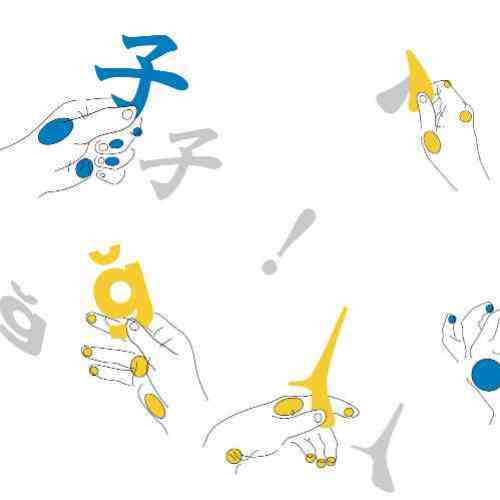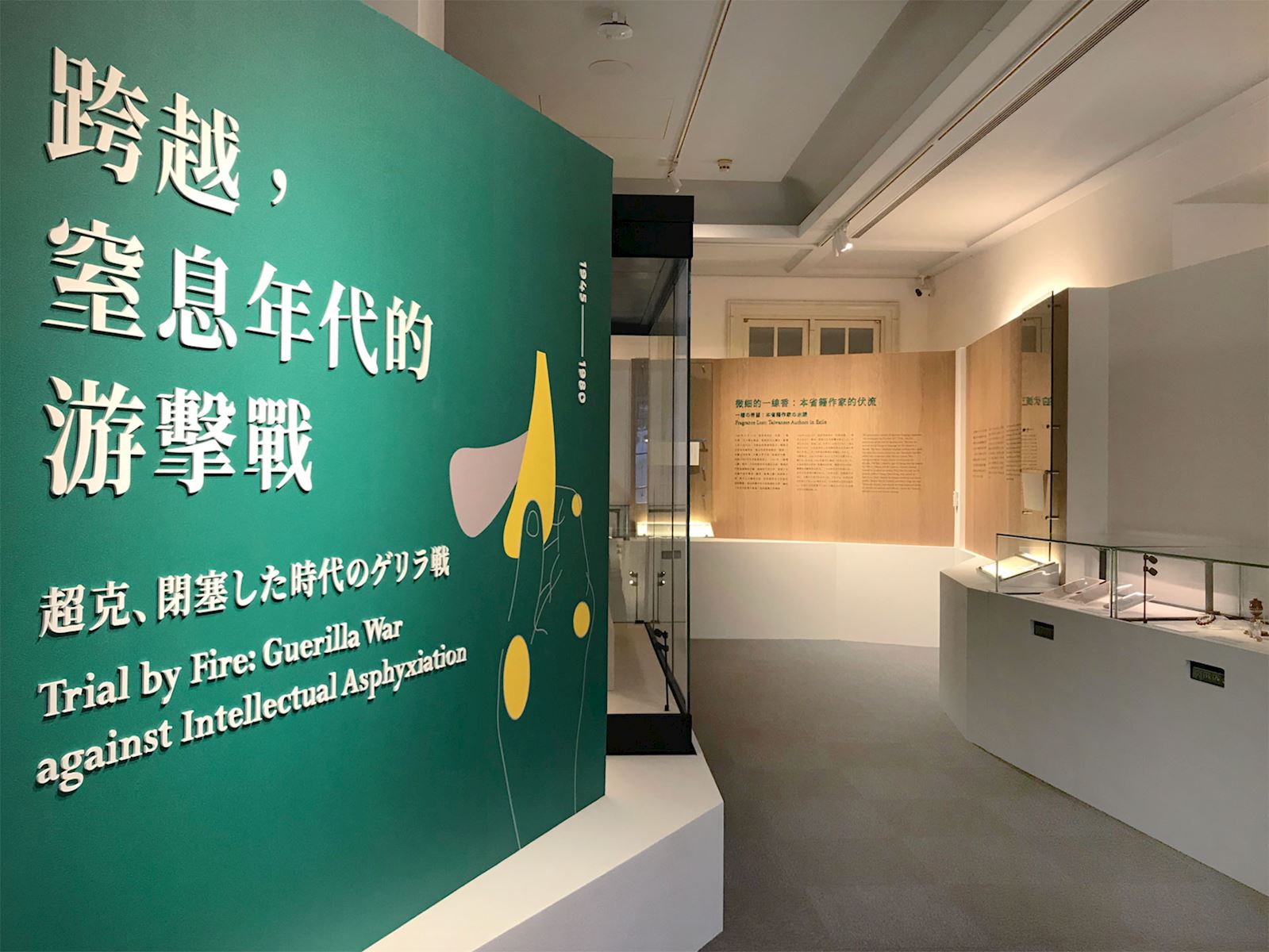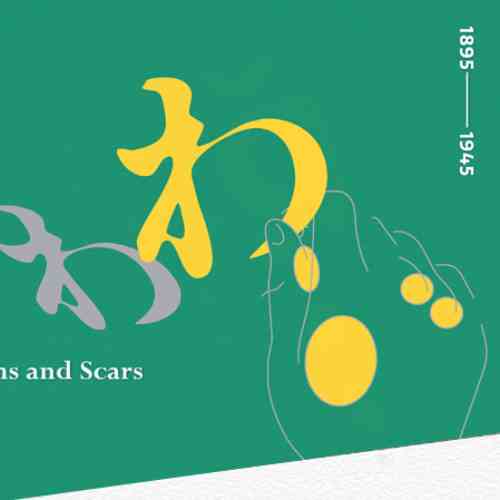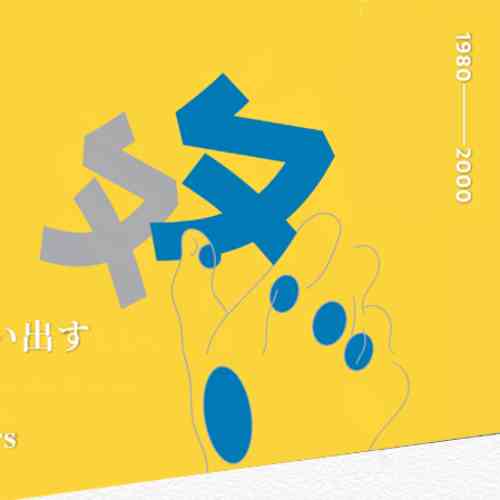(×□×;) You're Not Remembering Right: Literature under Surveillance
The transfer of Taiwan to the Republic of China (ROC) in 1945 was followed by the infamous 228 Incident in 1947 and an influx of government officials, soldiers, and civilians from the Chinese mainland in 1949. Rather than a turn for the better, the end of Japanese colonial rule faced Taiwanese authors with a familiar but very different set of repressive social and political controls. The new ROC authorities, which blamed communist propaganda for their defeat in the Chinese Civil War, enacted the Official Policy on Literature and the Arts in Taiwan.
'Anti-communist' literature dominated literary output in the 1950s. This highly politicized genre had little to do with Taiwan and drew nothing from the previous efforts of Taiwanese authors. Although a handful of works such as Chiang Kuei's The Whirlwind have literary merit, literature from this period bears little that is worthy of mention. Their lack of involvement in the Chinese Civil War and the government's ban on Japanese-language publications effectively ended the careers of most Taiwanese authors. Mainland émigré authors were also kept on a tight leash and barred from reading or discussing much of China's literature from the 1930s – particularly works 'tainted by leftist thought'.
Pigeonholed yet again, Taiwan literature would languish for another few decades until Taiwan's new, postwar generation of authors arose to challenge government strictures.
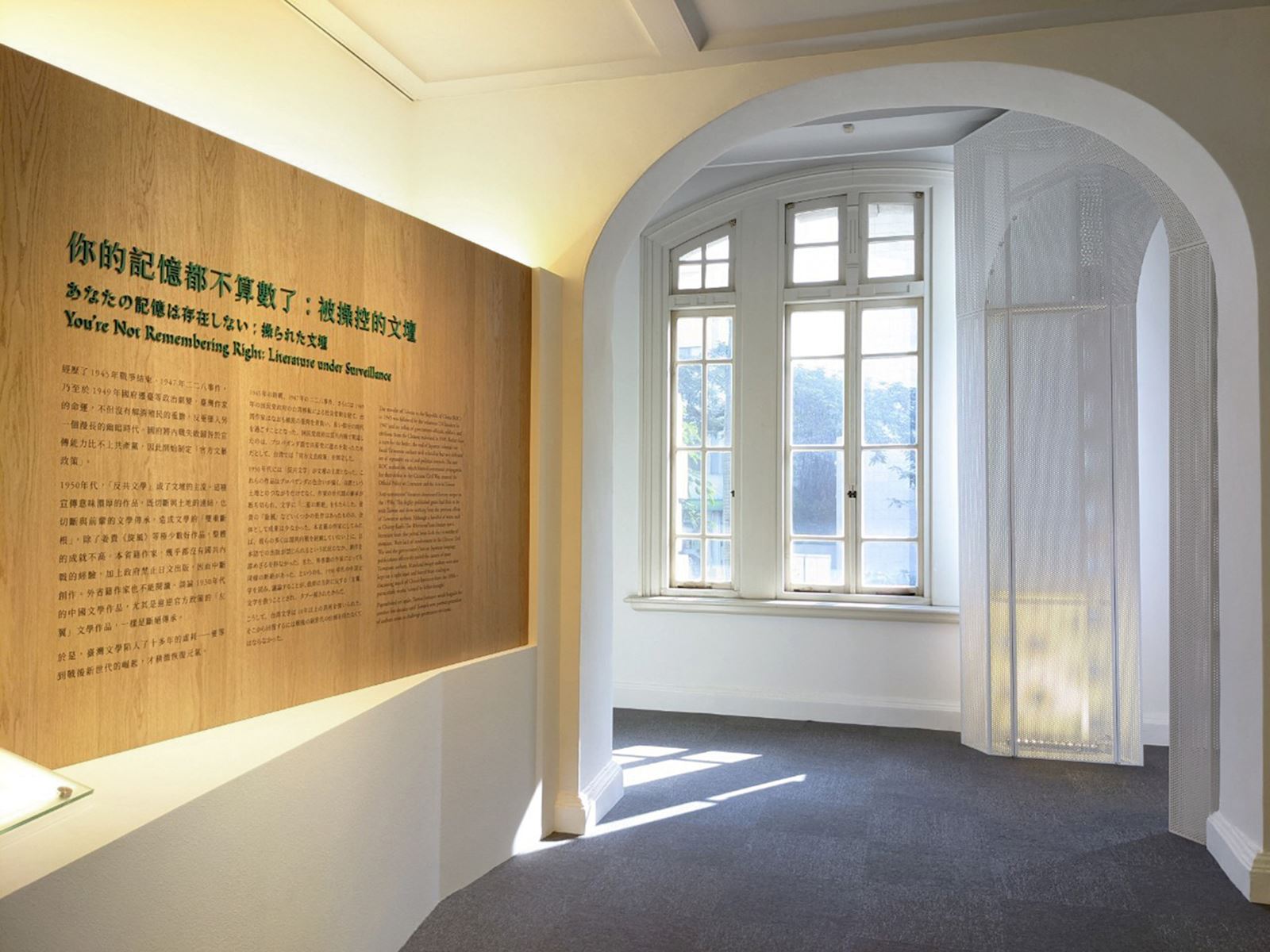
In the 1950s, some writers, especially women authors, strayed from standard anti-communist themes to focus on the particulars of life in Taiwan. Although women poets and novelists had been active in colonial-era Taiwan, the influx of Mainland Chinese women writers finally made women a potent force in Taiwan's literary community. The lively articles and serial stories written by women like Lin Hai-yin, Chi Chun, Kuo Liang-hui, and Cecilia Chang, while largely dispraised by mainstream literary circles, enjoyed great popular success. The writings of these authors sowed the seeds of Taiwan's women's-literature and romantic-fiction genres.
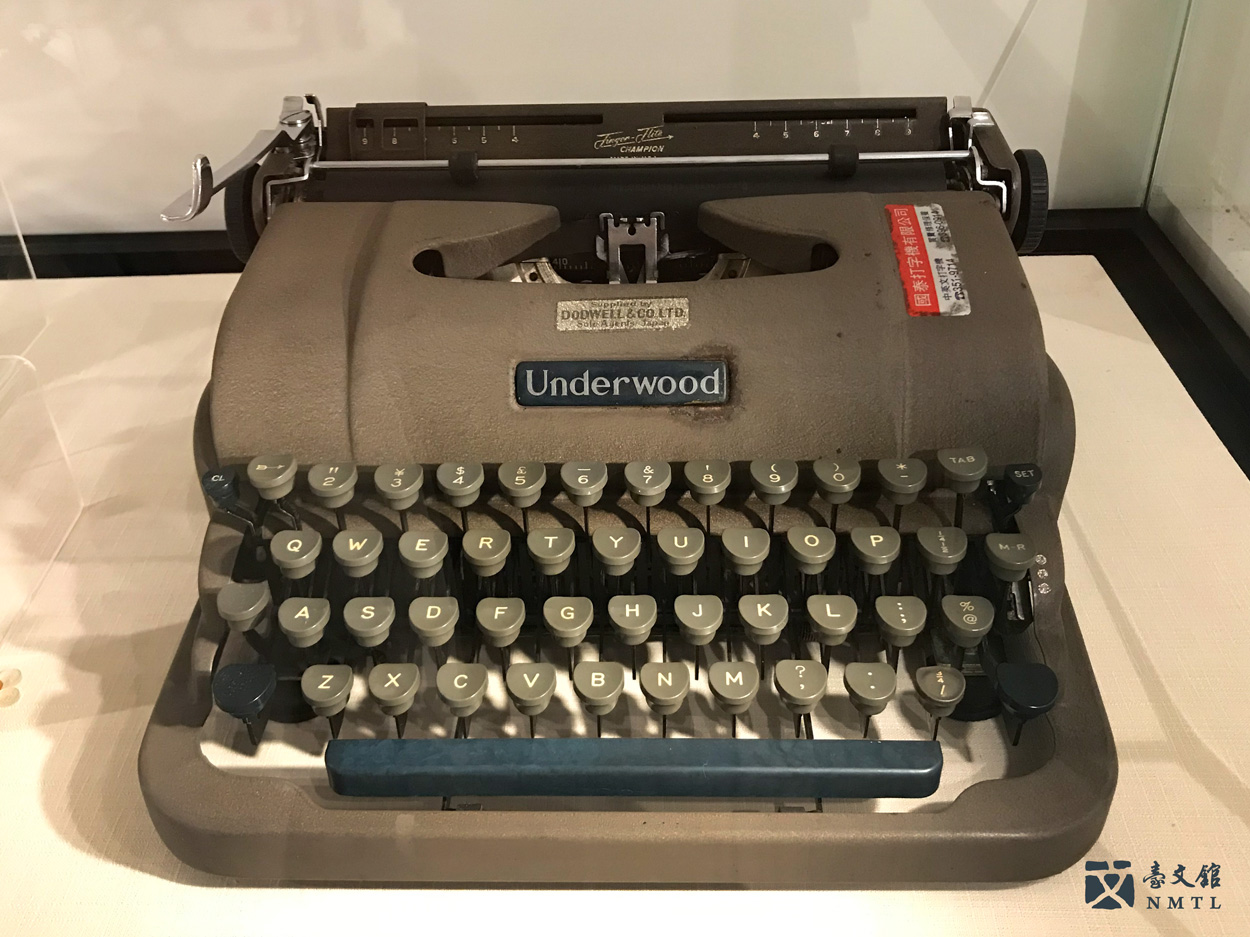
▸ UNDERWOOD typewriter used by Yin Xue-man|A typewriter used by Yin Xue-man (1918-2008). Yin's works mainly include novels, prose, and journalistic articles. He worked as a journalist. A Documentary of a Foreign Dream is based on his study in the U.S. in the 1960s, which is regarded a pioneering work in the "Student Immigrant Literary" genre. The typewriter is a testament to Yin's study experience abroad and writing career.
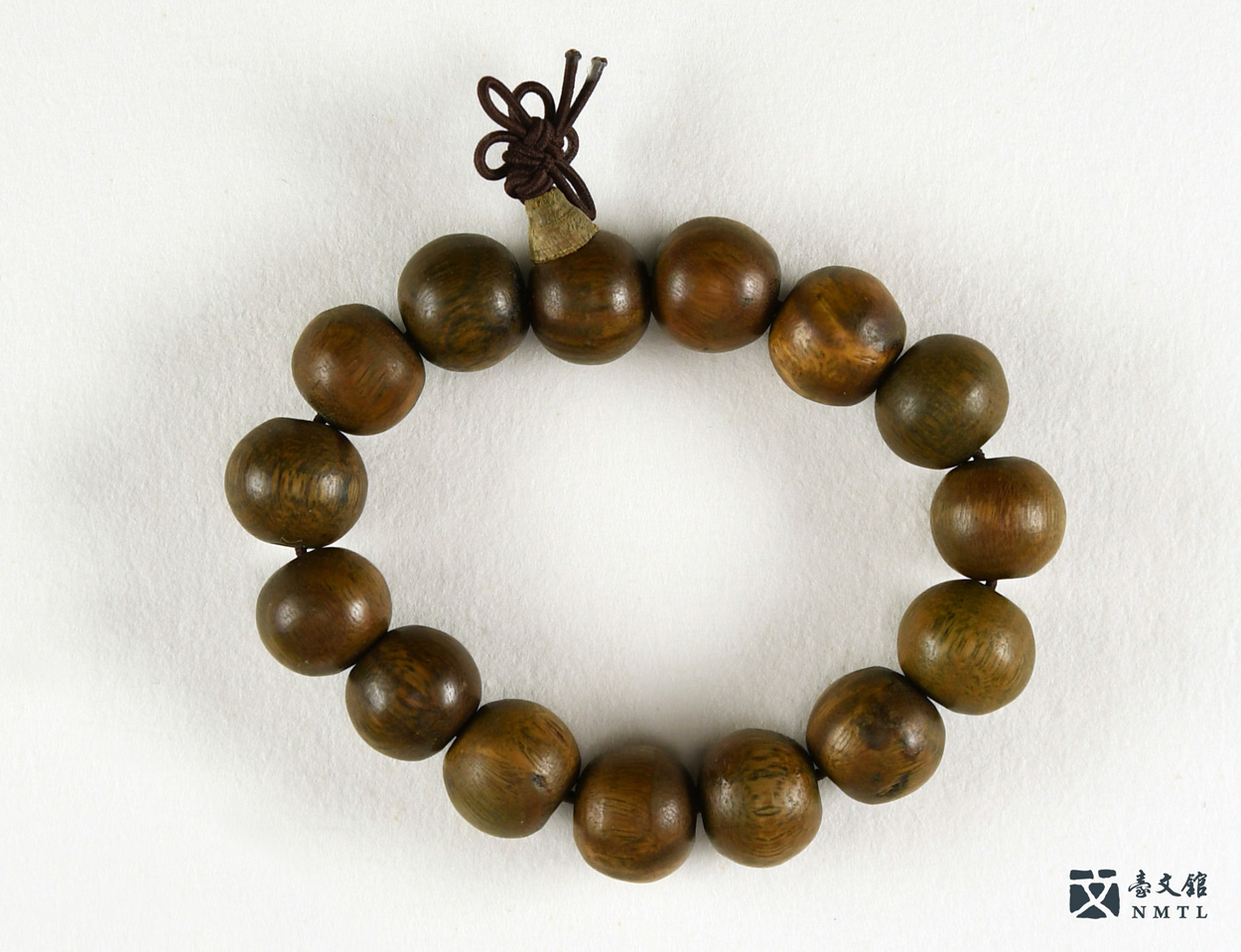
▸ Buddhist prayer beads collected by Liu Fang|The Buddhist prayer beads collected by Liu Fang (1919-2007). Liu's works mainly include novels, prose, and biographies. She was a former editor-in-chief for the magazine Literary Scene. Her works include: Little Butterflies and Half Bag of Noodles, Passing Water, Love at Thousand Buddha Mountain. In her later years, she practiced Buddhism at Fo Guang Shan. This string of beads is a testament to Liu's Buddhist journey.
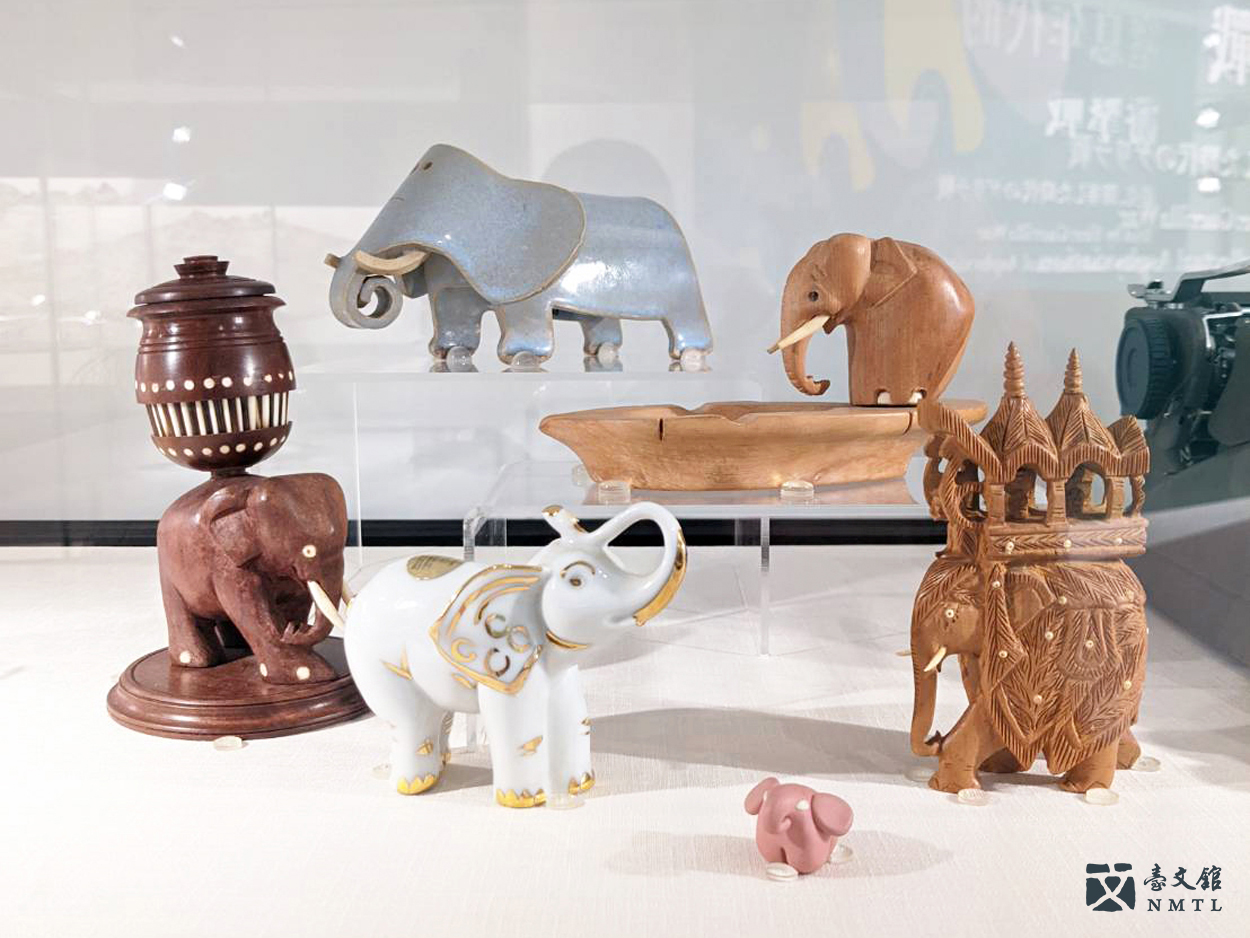
▸ Elephant doll collected by Lin Hai-yin|Lin Hai-yin (1918-2001) had long had a penchant for elephants from a young age. The number of elephant collectibles she collected both by herself and as gifts from her literary friends amounted to over one thousand. Made of different materials and in different shapes, these collectibles came from around the world. This exhibit shows one of them. Lin loved elephants and wrote about elephants. One of her works is called Intelligent—Exhibition of Haiyin's Elephant Collection.
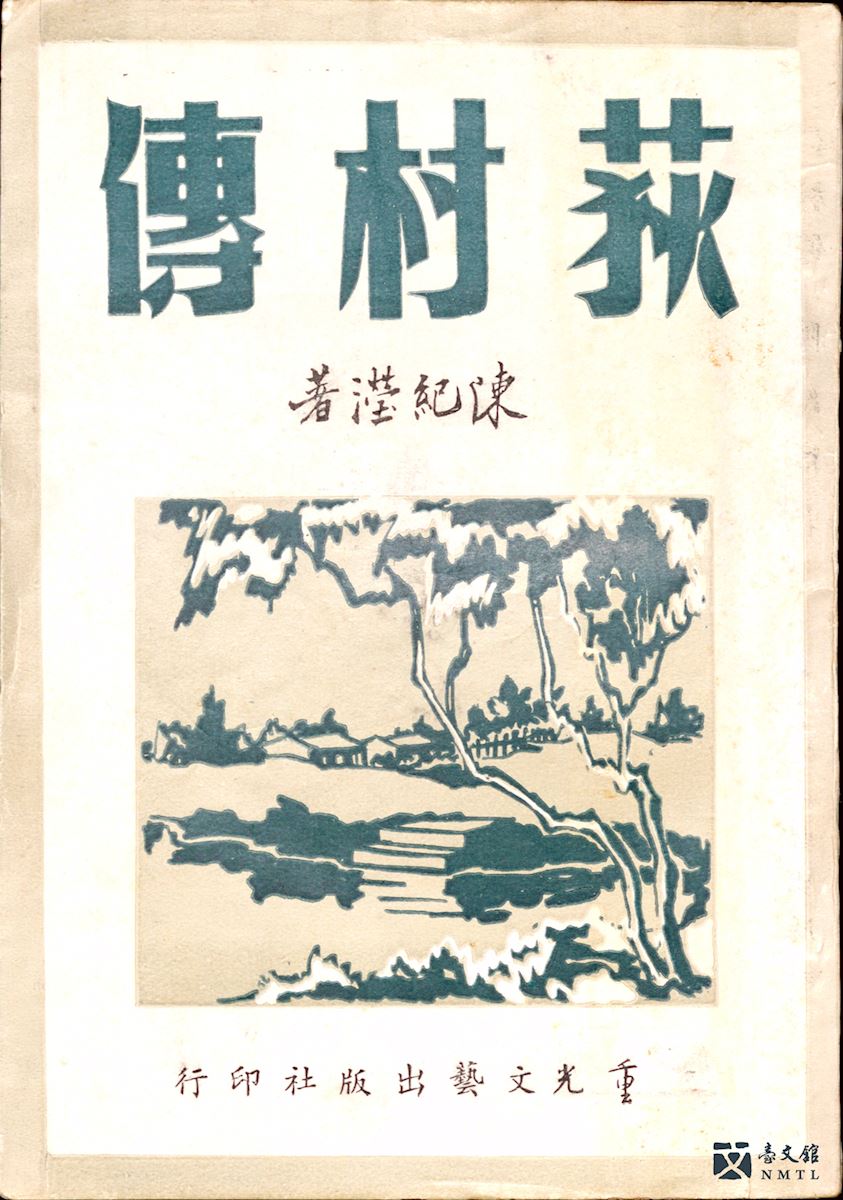
▸ Chen Ji-ying, STORY OF DI VILLAGE|This was the first novel of Chen Ji-ying (1908-1999) written after coming to Taiwan. It was published in 1951. Chen was a permanent director of the Chinese Writers' & Artists' Association and was a leader in the development of anti-communist literature. This well-known work of the anti-communist genre, Story of Di Village describes the communist party's emergence and decline in China. The writing style is similar to Lu Xun's The True Story of Ah Q.
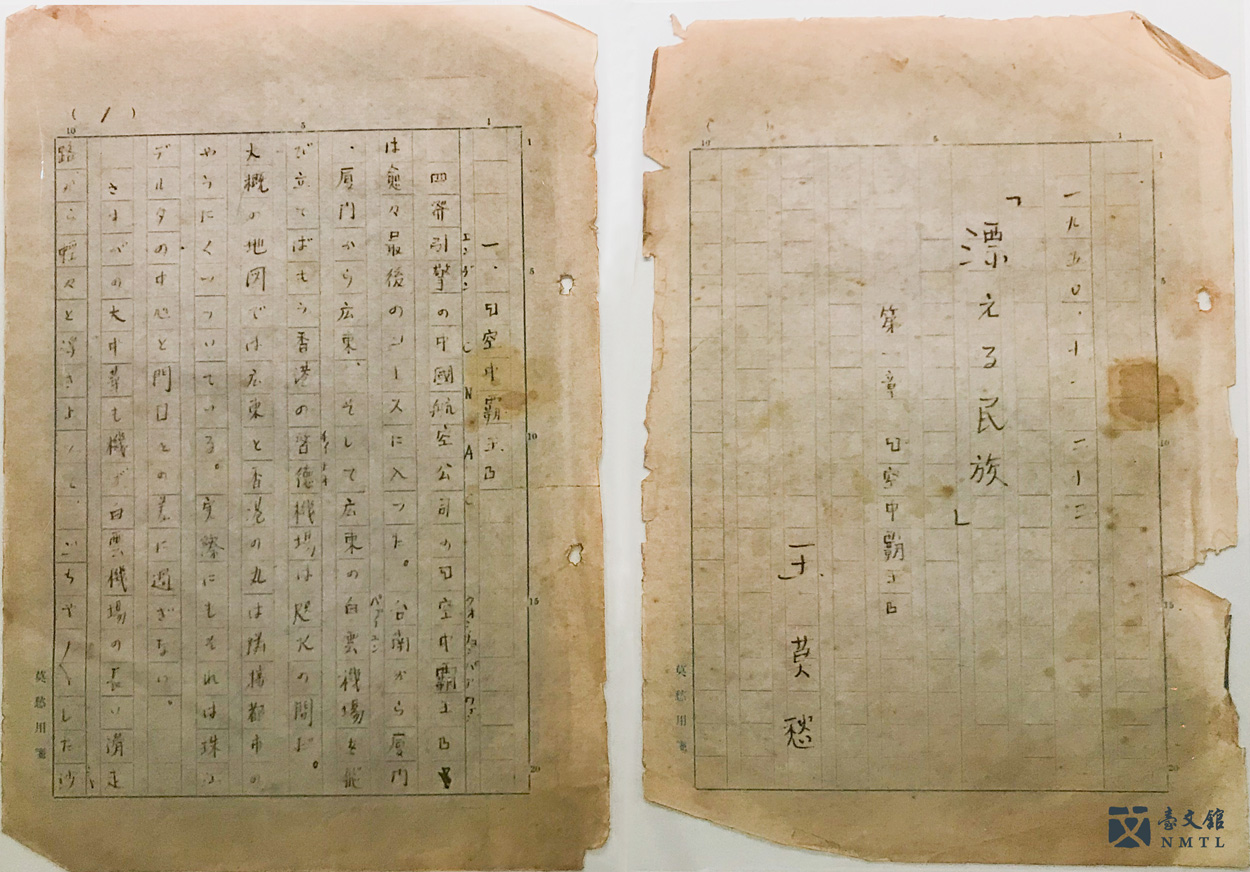
▸ Ong Lok-tek, Manuscript cover & inside pages of "A Nation Adrift"|Ong Lok-tek, a linguist and writer in exile in Japan, was forced to flee to Japan due to political oppression. However, he continued to keep track of the developments in Taiwan while initiating research on Taiwanese and movements for Taiwan independence. His life adrift echoed the lamentable destiny of the Taiwanese people as well as the sense of helplessness against the current of history.
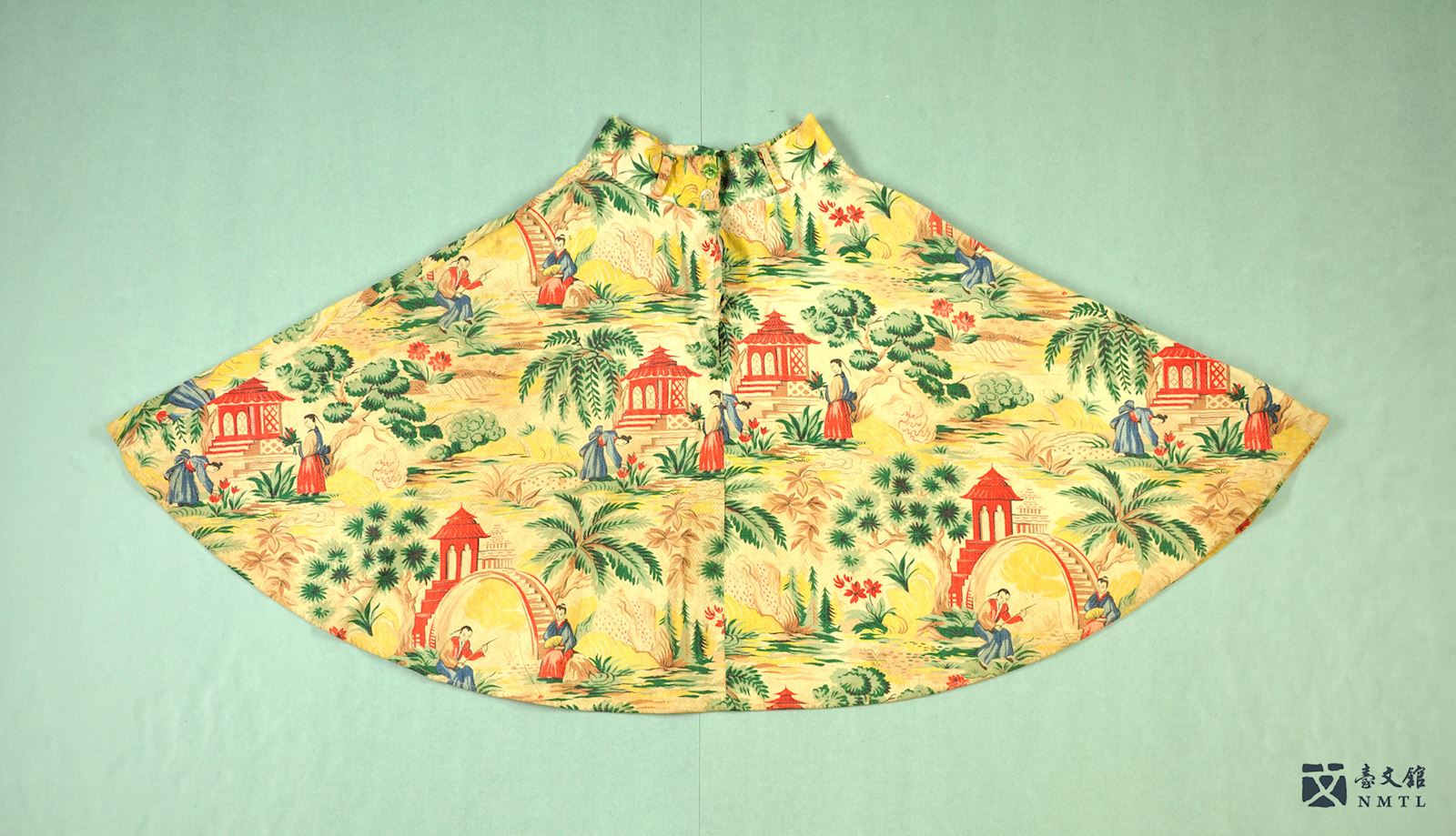
▸ Liu Mu-sha's simple wedding skirt|Skirt worn by Liu Mu-sha (1935-2017) during her wedding with Chu Hsi-ning (1927-1998). Liu said "From getting the marriage license at Kaohsiung District Court to the honeymoon in Tainan, I wore the same short-sleeved white shirt and patterned skirt. I even played a match of tennis in this outfit."
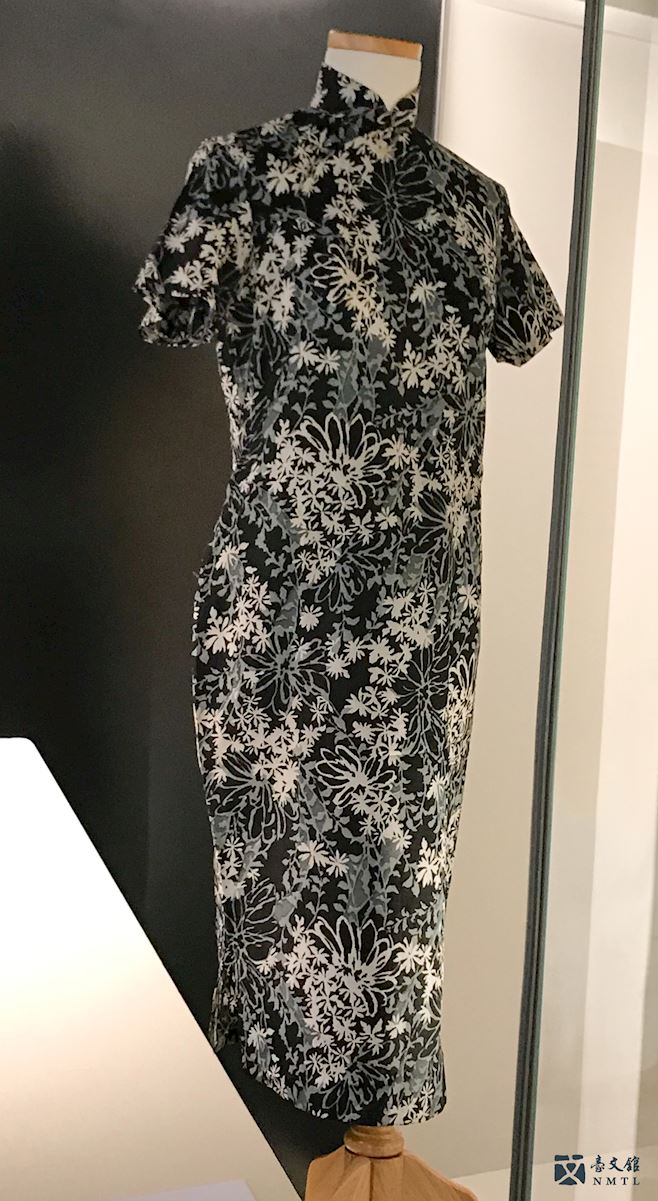
▸ Cheongsam with flower patterns owned by Ai Wen|Cheongsam designed and sewn by Ai Wen (1923-2009). Mainland women writers such as Ai Wen, Law Lan, and Zhang Xiu-ya frequently wore cheongsams, demonstrating the unique characteristics of women writers at the time. Ai Wen not only liked to wear cheongsams, but was also good at making clothes such as this cheongsam.
(~ ≖‿≖)~ Fragrance Lost: Taiwanese Authors in Exile
The government banned all Japanese-language magazines and newspapers on October 25th, 1946 - the first anniversary of the end of Japanese rule. This was the second forced change in language on the island in a decade. The many Japanese-language authors who could not make the creative transition into Mandarin had little choice but to abandon their literary careers. This intergenerational literary chasm would persist for decades. The first, tentative sign of change was the launch in 1964 of TAIWAN ARTS & CULTURE, a literary journal funded by colonial-era author Wu Chuo-liu and run by postwar author Chung Chao-cheng, who served as Editor-in-Chief. Despite its meagre resources and minor profile, TAIWAN ARTS & CULTURE provided a stage for new Taiwanese authors, introduced the long-neglected works of colonial-era authors, and offered a haven for Taiwan's officially ostracized literary heritage.
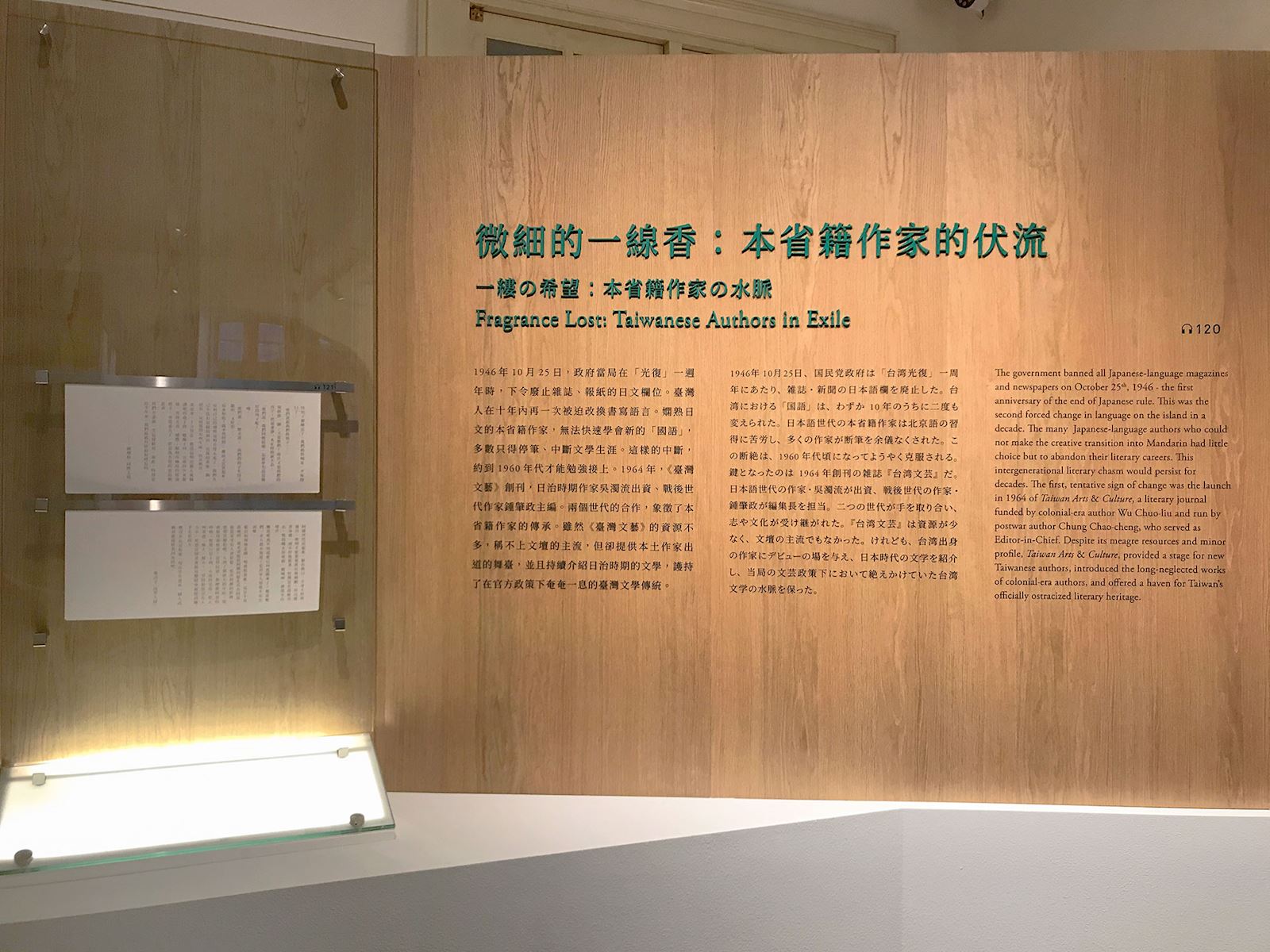
While TAIWAN ARTS & CULTURE focused on narrative prose, the journal LI POETRY, also launched in 1964, focused on new poetic works. Both helped raise again the torch of Taiwan literature. LI POETRY featured works by both postwar and colonial-era authors, including Lin Heng-tai, Zhan Bing, and Jinlian, who were all members of the 1940s Silver Bell (Ginreikai) Poetry Society. In an era known for its literary impoverishment, Taiwan's pre-1945 poets translated both Japanese poetry and colonial-era Japanese-language poetry into Chinese, translated new works of Chinese poetry into other languages, and helped forge literary bridges to South Korea and other countries in the region.
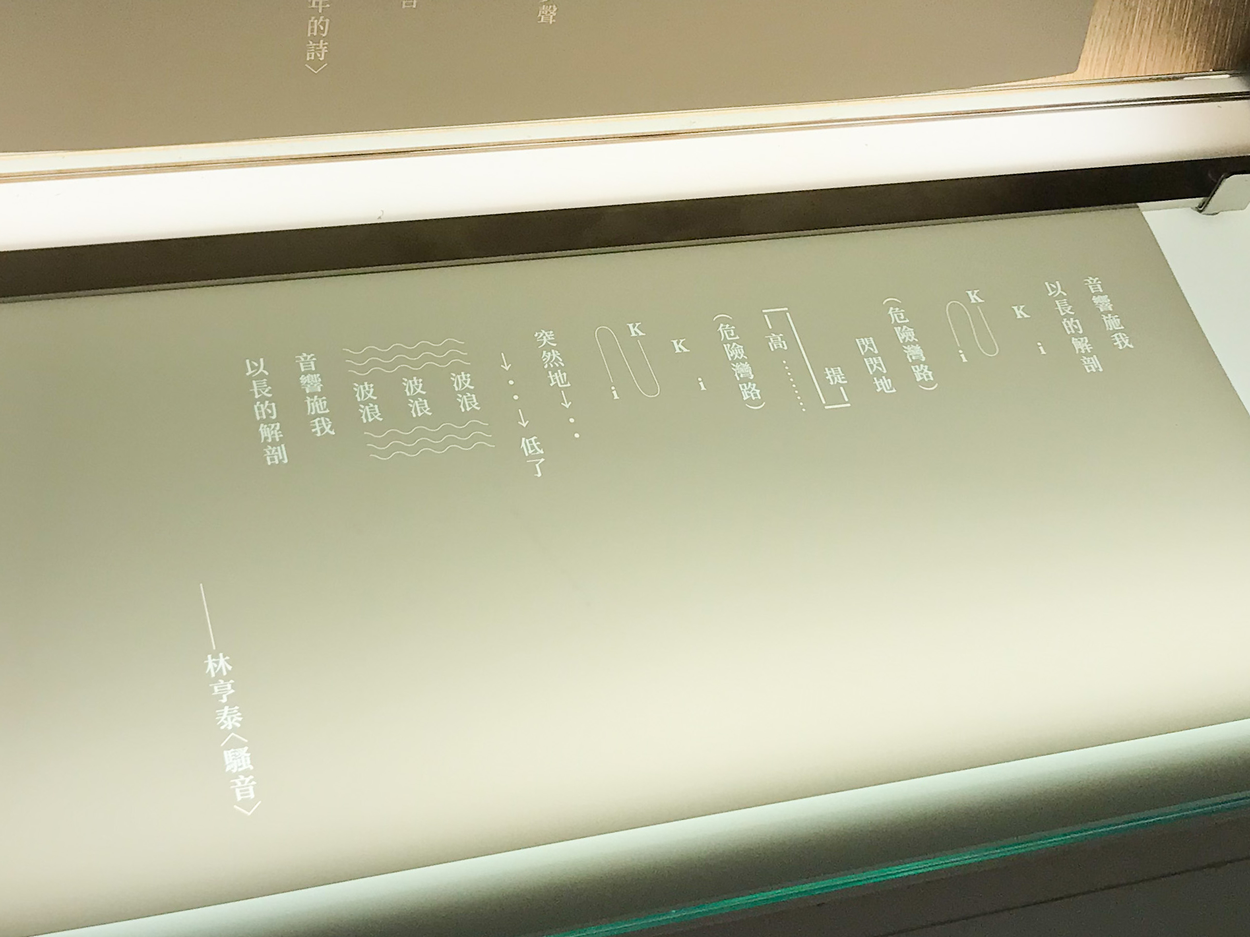
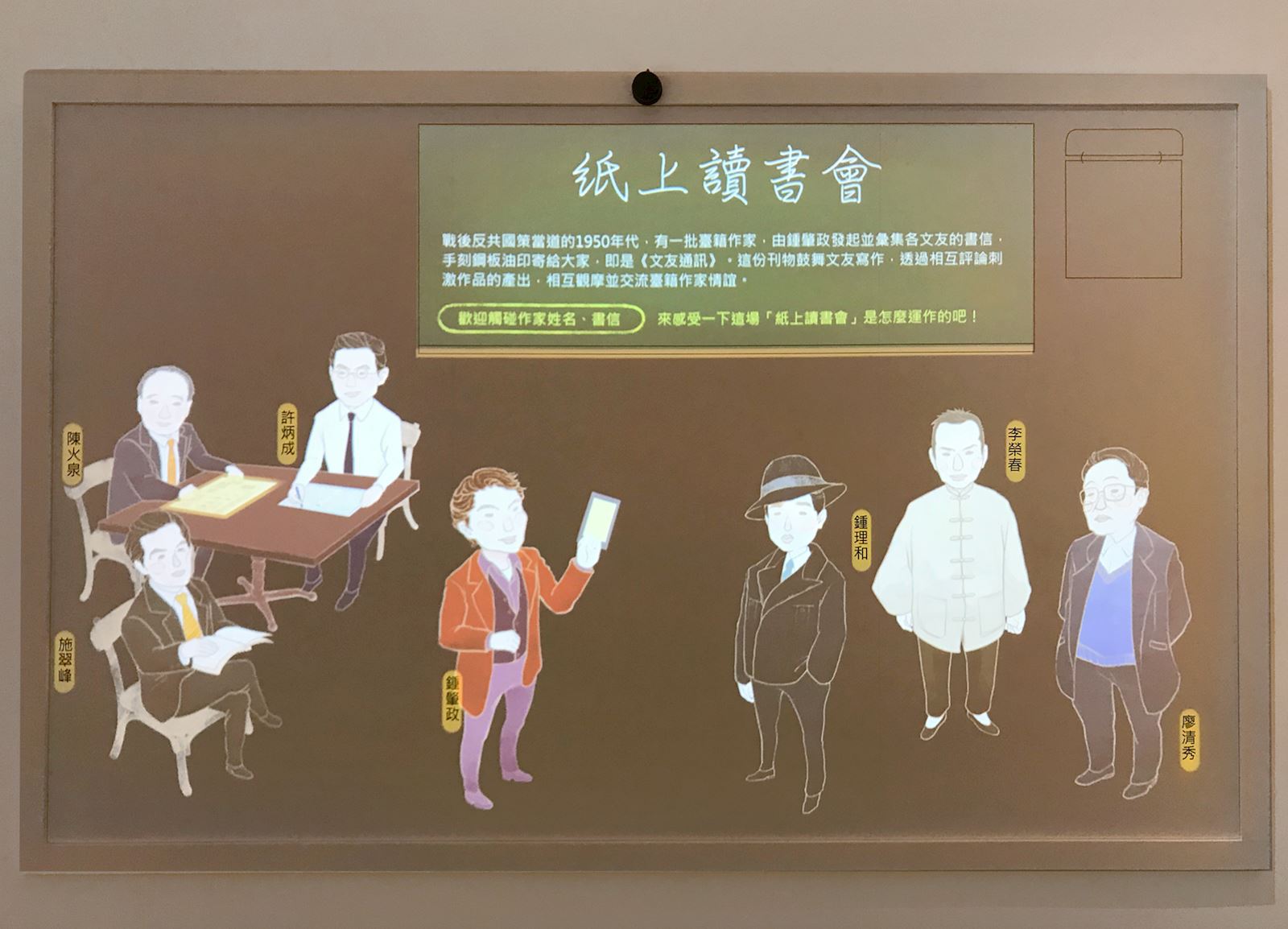
READING CLUB ON PAPER Interactive Installation
Through LITERATURE CORRESPONDENCE, Chung Chao-Cheng collected letters from his literary friends and encouraged critiques and literary works. Come join a book club meeting with local Taiwanese writers in the 1950s and tap on the flickering images to make friends with them.

▸ Shunsei Kunie, "Taiwan's Haiku"—Manuscript|Shunsei Kunie (1928-2016) was a poet, novelist, and sculptor. She dedicated her writing career to Haiku and Tanka. In 1970, she founded the "Taipei Haiku Society" and published the Taipei Haiku Collection. Shunsei Kunie was one of the few writers of the translingual generation who still insisted on writing in Japanese after the war.

▸ Li Rong-chun, Manuscript of MOTHER LAND & FELLOW COUNTRYMEN|Li Rong-chun (1914-1994) was one of the first postwar nativist writers and a member of Literature Correspondence. Mother Land & Fellow Countrymen is Li's best-known work, containing 700,000 words. In 1953, this work was awarded a grant by the Chinese Literature and Arts Prize Committee, a government-owned organization.
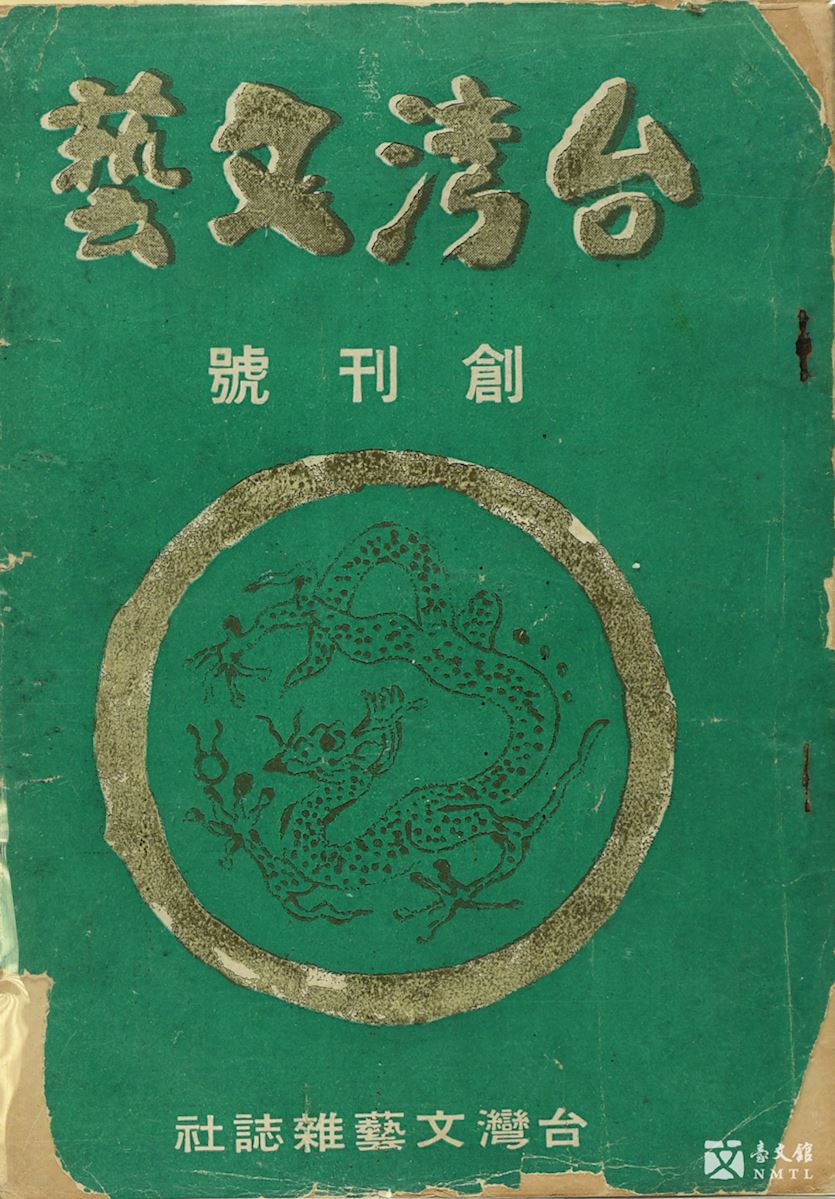
▸ 1st issue of TAIWAN ARTS & CULTURE|A nativist literature magazine founded by Wu Chuo-liu in April 1964. Covering works produced during the Japanese Colonial Period as well as postwar literary efforts, the magazine kindled the flames of Taiwan's literary scene during the Martial Law Period. After Wu passed away in 1976, the magazine continued to be published by several owners before it was finally suspended in 2003.
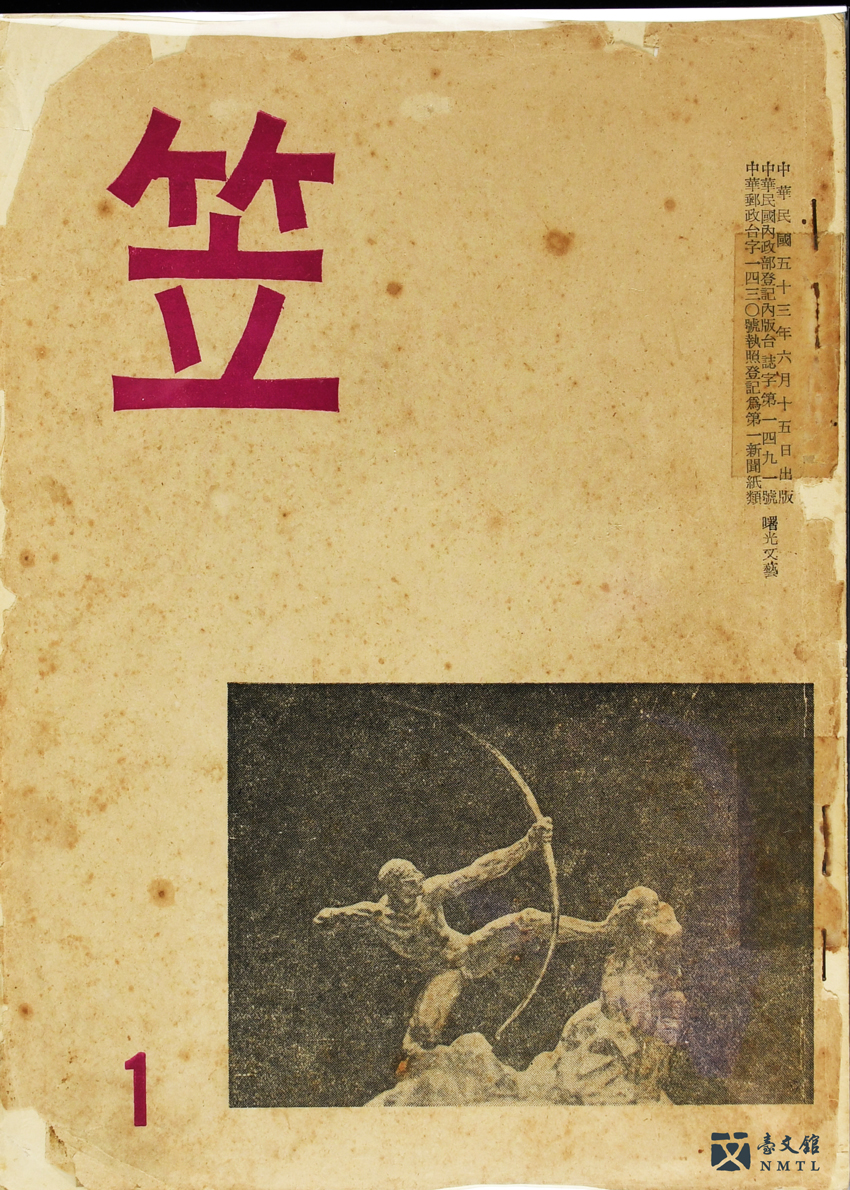
▸ 1st issue of LI POETRY|A poetry periodical founded in June 1964 by poets Chen Qian-wu, Ba Qiu, and Lin Heng-tai. It is still published today. Li Poetry Periodical emphasizes the connection between poetry and reality and introduces readers to modern poetry from around the world. It has been an important postwar publication on modern poetry and literary groups.
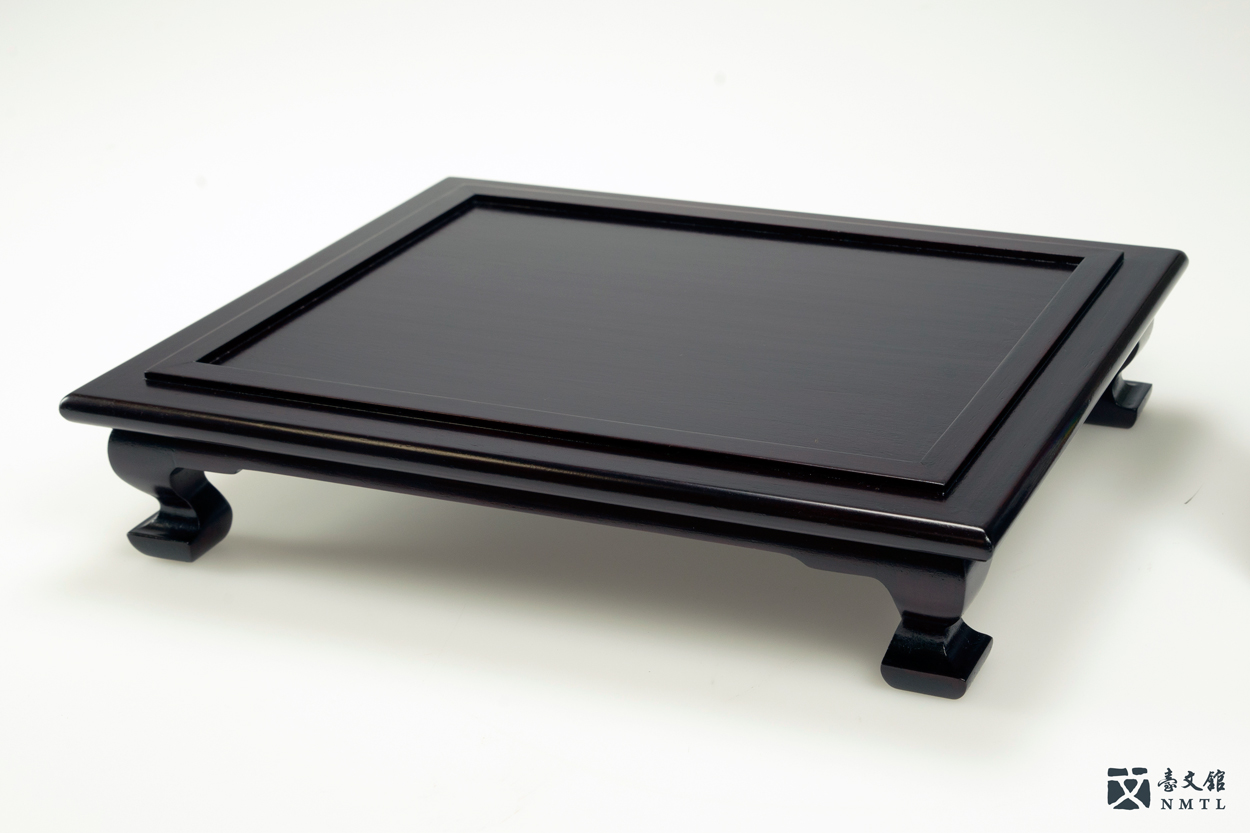
▸ Writing desk of Chung Li-ho|Wooden writing desk of Chung Li-ho (1915-1960). Chung continued to write all his life despite his poverty and ill health. Chung is known as "the true writer that wrote till the last moment of his life" and this writing desk was the only desk he had for writing. It is a testament to the hardships of his writing career. The original desk is exhibited at Chung Li-ho Museum.
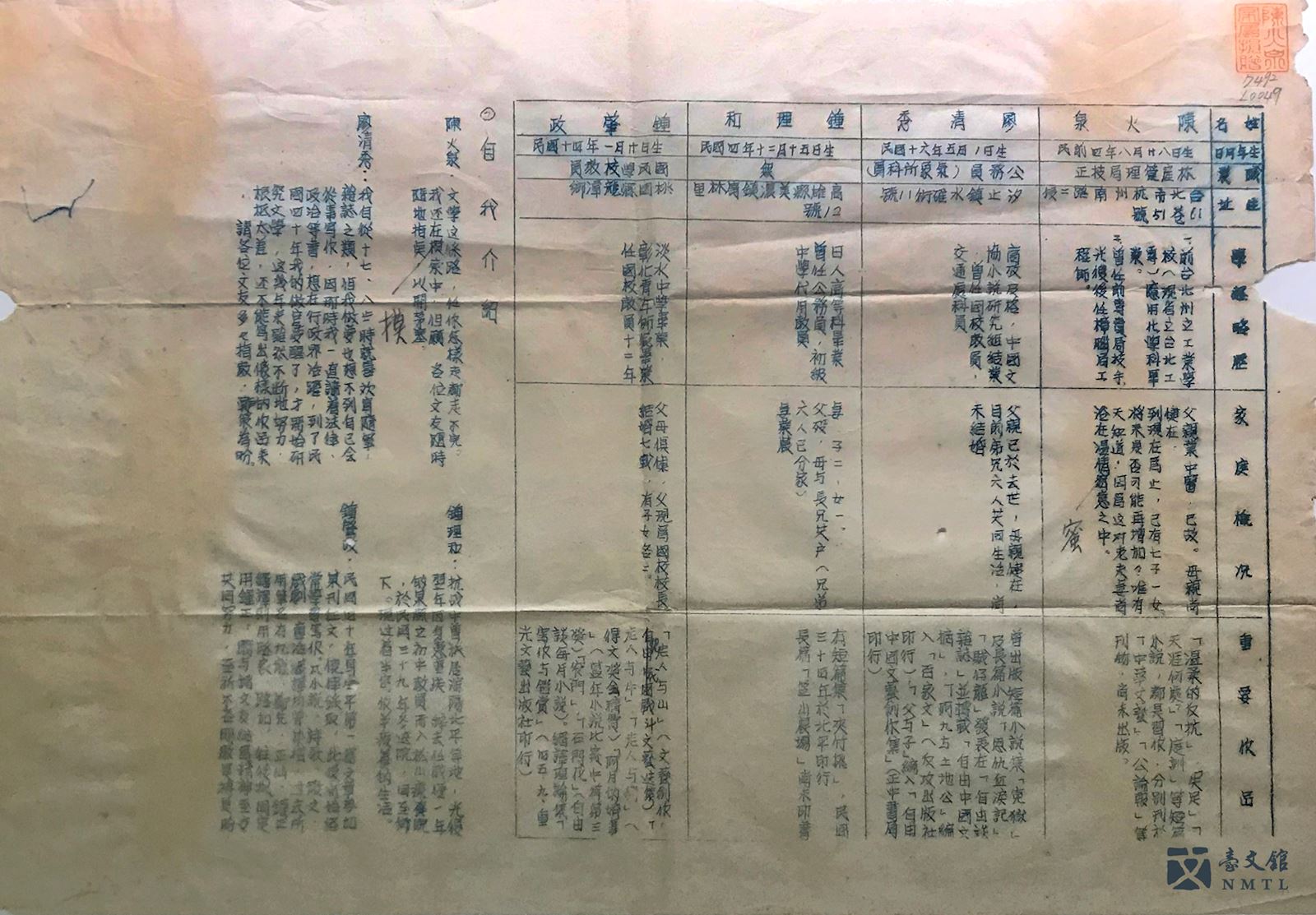
▸ 2nd issue of LITERATURE CORRESPONDENCE|《Second issue of Literature Correspondence, published May 4th, 1957. Literature Correspondence was founded by Chung Chao-cheng, Chung Li-ho, Liao Qing-xiu, Li Rong-chun, Mu Xin, and Shi Tsui-Feng. This underground publication launched by nativist writers after the war featured literary works, critiques, and current news on literary figures. There were a total of 16 issues and publication was suspended in September 1958.
٩(;ʘ¿ʘ;)۶ By the Light of a Prison Cell Window: The USIA and Modernism
The first generation to grow up in the 'Republic of China on Taiwan' began writing during the 1960s. Although Chinese was now their first language, freedom of expression was still tightly controlled and Taiwan's prewar literary heritage was virtually unknown. During this period, the United States Information Agency (USIA) and its magazine WORLD TODAY introduced Taiwanese to works of American and European literature, bringing new ideas and inspiration to Taiwan's youth and a providing source material that was eagerly absorbed and imitated.
The modernist literature movement launched by NTU students in the 1960s differed from the Japanese-oriented modernist literature movement of the 1930s in that it was framed by American-influenced, Western modernism. Authors such as Pai Hsien-yung, Wang Wen-hsing, Ouyang Tzu, and Lucy Chen, acutely aware of Martial Law censors, plumbed the depths of the 'modernist spirit' while judiciously skirting sensitive political issues. This youth-led, USIA-fueled literary movement gained irrepressible momentum, and the literary perspective of this generation of authors defined Taiwan literature through the end of the century.
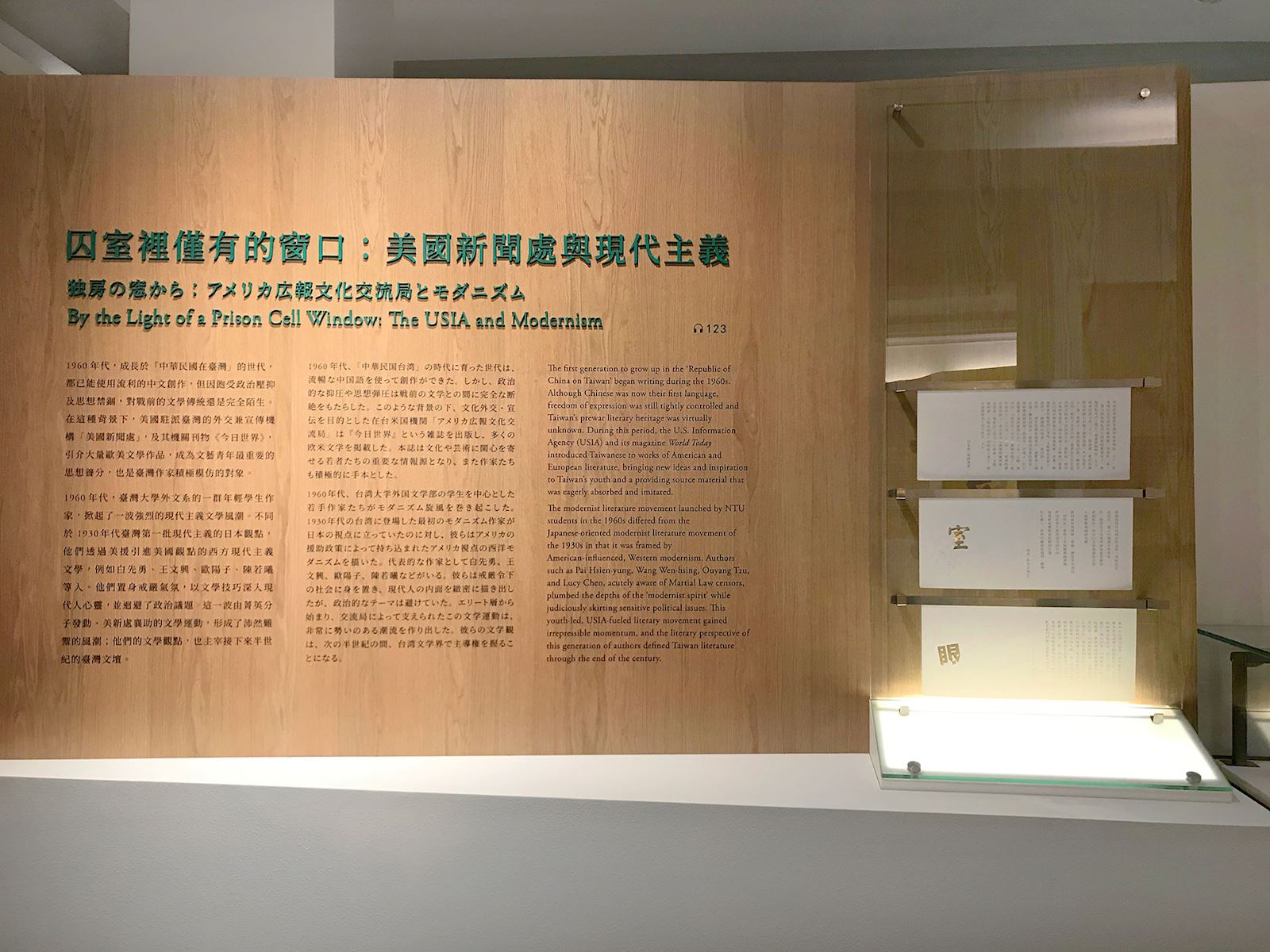
During the Martial Law Period (1949 – 1987), the United States represented both culture and opportunity.
"Study at NTU, go to the USA" was a common saying among youth that encouraged students to study hard, get into graduate school overseas, and break free of Taiwan and its martial-law straightjacket. Freedom of speech in the U.S. offered repressed political ideas the opportunity to be heard. Taiwanese authors writing in the United States at this time included liberal-leaning Nieh Hua-ling, left-leaning Guo Song-fen, and independence advocate Hu Min-hsiung. Although far away, their passions remained stubbornly focused on Taiwan.
During this period, many Southeast Asian Chinese resettled in Taiwan in response to the patriotic overtures of the ROC government. Malaysia contributed the largest group of authors, with Lee Yung-ping, Woon Swee Oan (Wen Rui’an), Chang Kuei-hsing, and others creating a new 'Mahua' (Malaysia-Chinese) literary genre. Expecting to join a Chinese cultural renaissance in Taiwan, these émigrés instead further intensified the chronically complicated debate over ethnic consciousness and identity.
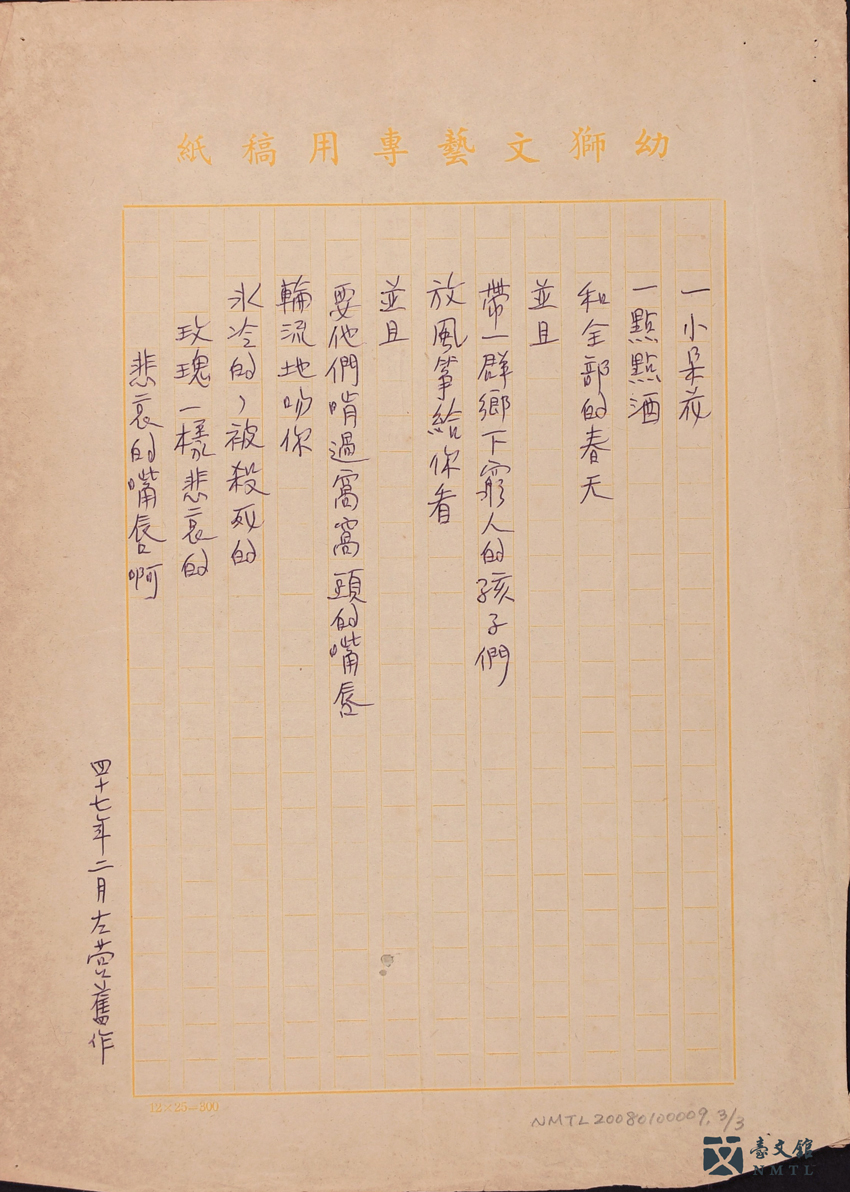
.jpg)
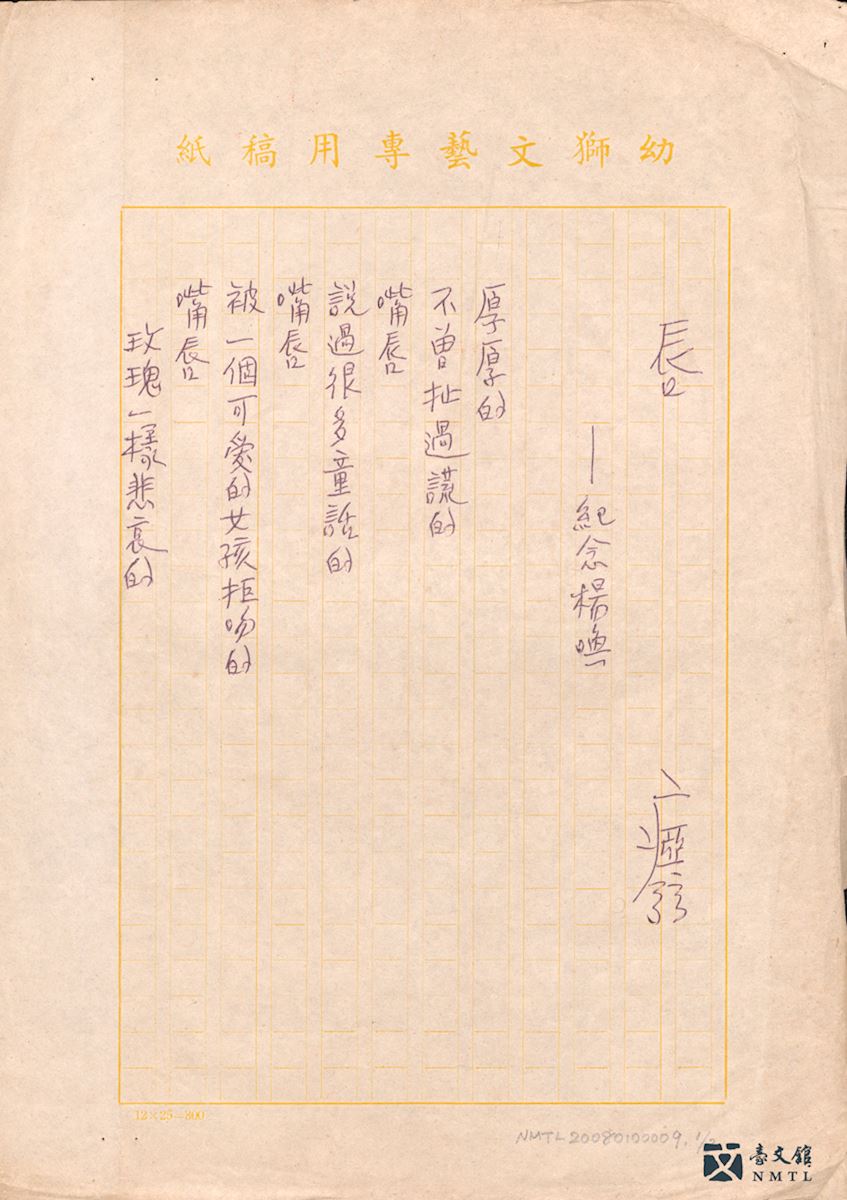
▸ Yaxian, Manuscript of "Lips—In Memory of Yan Huan"|To commemorate the late poet Yang Huan (1930-1954), Yaxian wrote this poem in February 1958. This poem uses the image of "lips" in describing Yang Huan's character, his contributions to children's literature, and the writer's reluctance to see him pass away: "the lips are thick/and never lied/lips/uttering childlike words/the lips…"
.jpg)
▸1st issue of THEATER|Founded by Chuang Ling and Cui De-lin, the first issue of the quarterly Theater was released in January 1965. In 1968, the publication was suspended after 9 issues. Theater introduced modernist thought from the West, which profoundly influenced movies, art, literature, and theater. Writers such as Chen Ying-zhen and Liu Da-jen were also involved.
( ఠ్ఠ ˓̭ ఠ్ఠ ) Fiction, the Last Refuge of Chivalry: Wuxia Novels
Between the 1950s and 1970s, no books sold better than wuxia (martial hero) novels. The 'new wuxia' genre, created by Hong Kong and Taiwan-based authors Jin Yong, Gu Long, and Liang Yu-sheng, adopted Western literary devices and set narratives within a romanticized Chinese world, giving these novels long-lasting, universal appeal. Tales of virtuous heroes and martial chivalry offered readers an escape from the sharply un-chivalrous realities of Taiwan under martial law. The Chinese setting of wuxia novels fit with official literature and art policies. 'Anti-communist' literature had by now engendered a romanticized nostalgia for ancient China that resonated in the wuxia-themed poetry of Woon Swee Oan and other modern neo-classical poets. The advent of book-rental shops in the 1980s further boosted demand for wuxia novels and fueled the literary careers of Chu-Ko Ching-yun, Sima Ling, Wolong Sheng, Shang-guan Ding, and other wuxia authors.
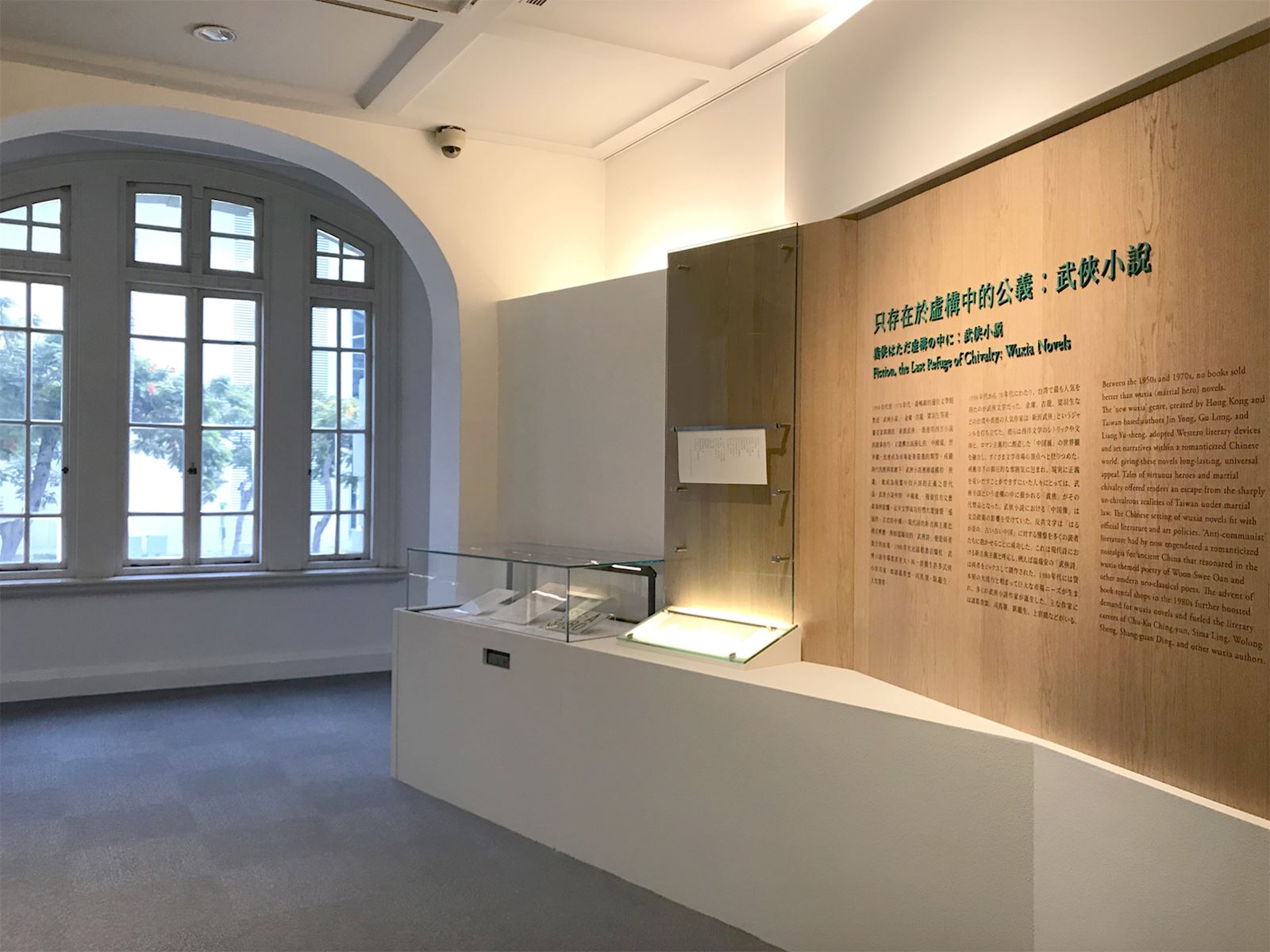
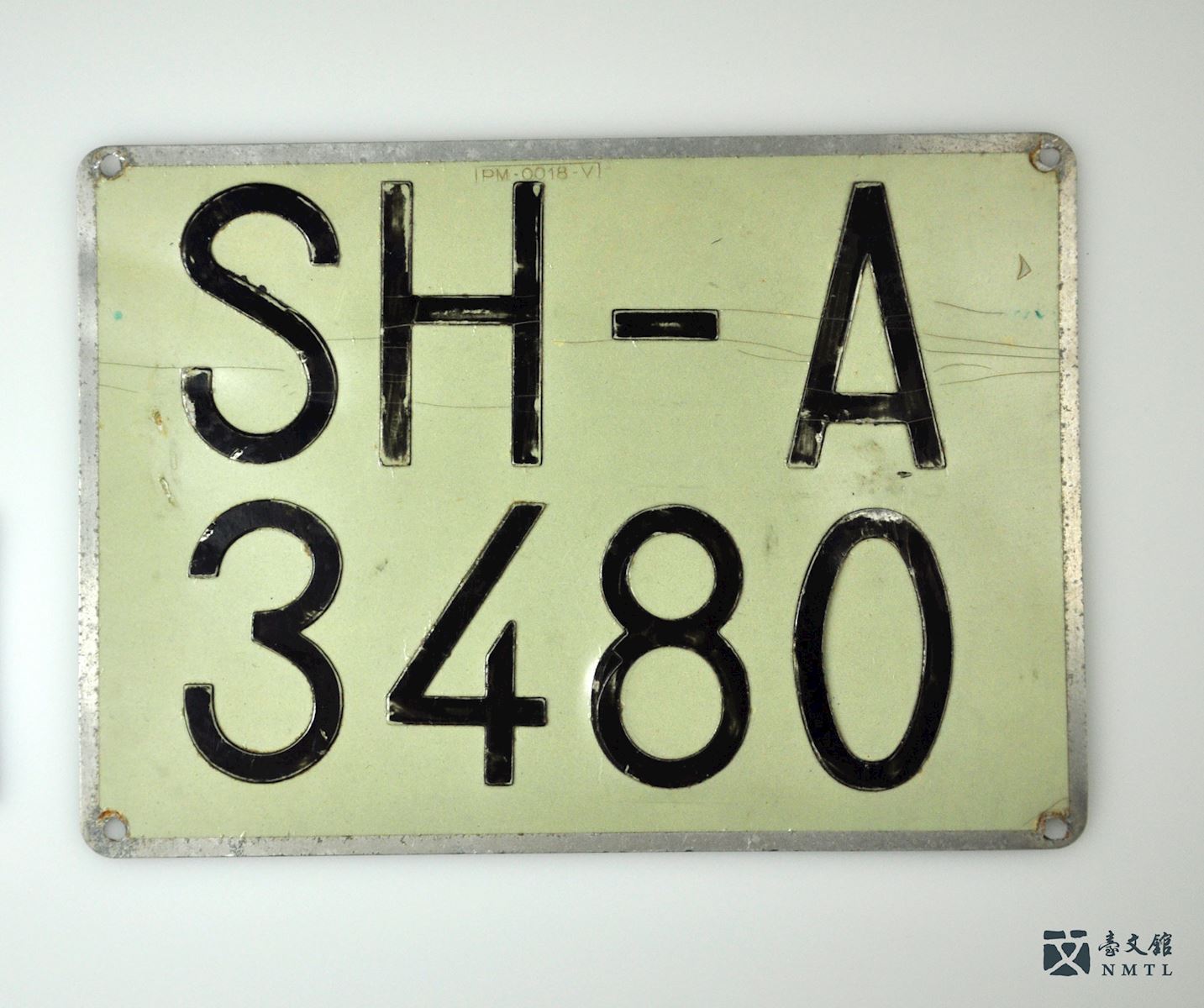
▸ Vehicle license plate of Sanmao from Spanish Sahara|The vehicle registration plate of Sanmao (1943-1991) used while she was living in Spanish Sahara. It was eventually brought back by the writer to Taiwan and featured in her short essay "The first white horse." Sanmao's portrayal of her life in Spain and Spanish Sahara as well as the exotic lifestyle there were characteristic features of the travel and nomadic literature genres, which were rare in the 1970s.
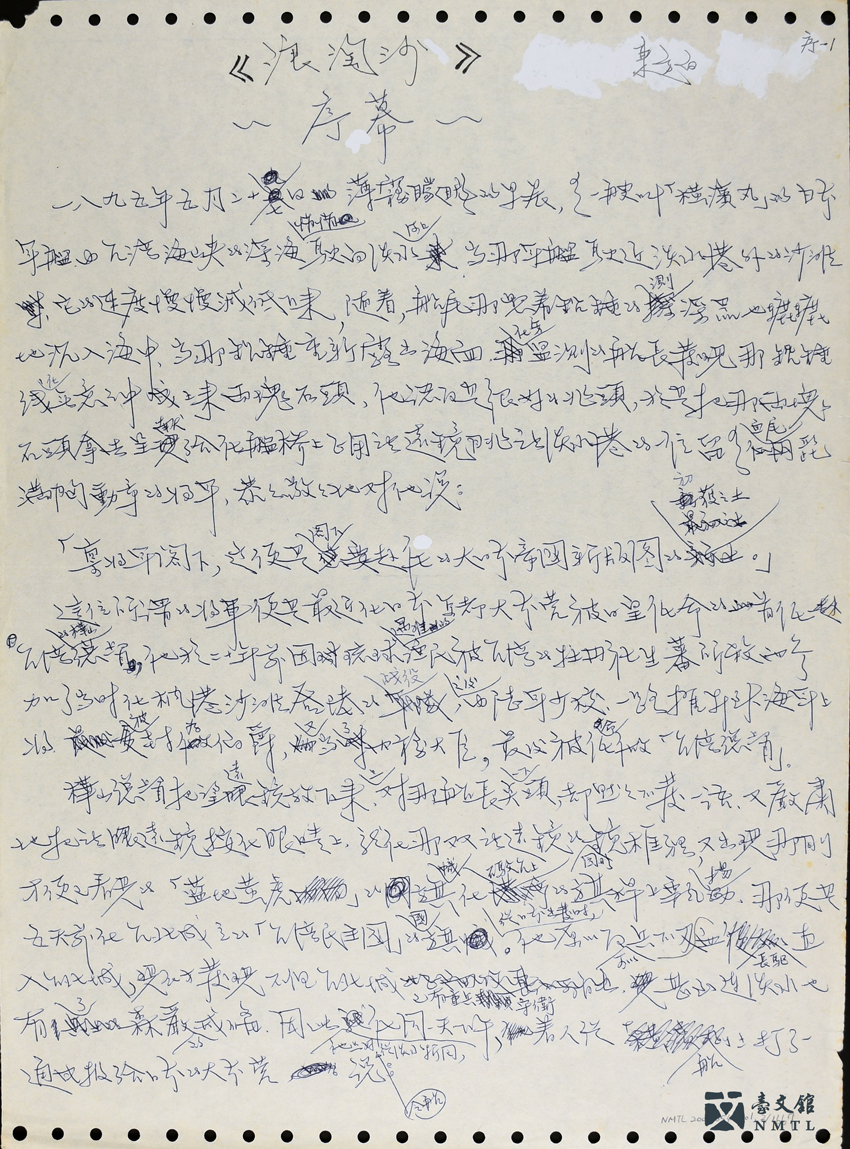
▸ Dong Fang Bai, Manuscript of SAND IN THE WAVES|Manuscript of SAND IN THE WAVES, a long novel written by Dong Fang Bai (1938-). This is one of the better-known works of roman-fleuve in Taiwan. It took ten years to finish. Through the story of the first female doctor in Taiwan, Tsai Ah-hsin, the novel illustrates the lives, joys, and sorrows of three families, reflecting how external forces (waves) continue to wash over the Taiwanese people (sand) and representing their indefatigable spirit.
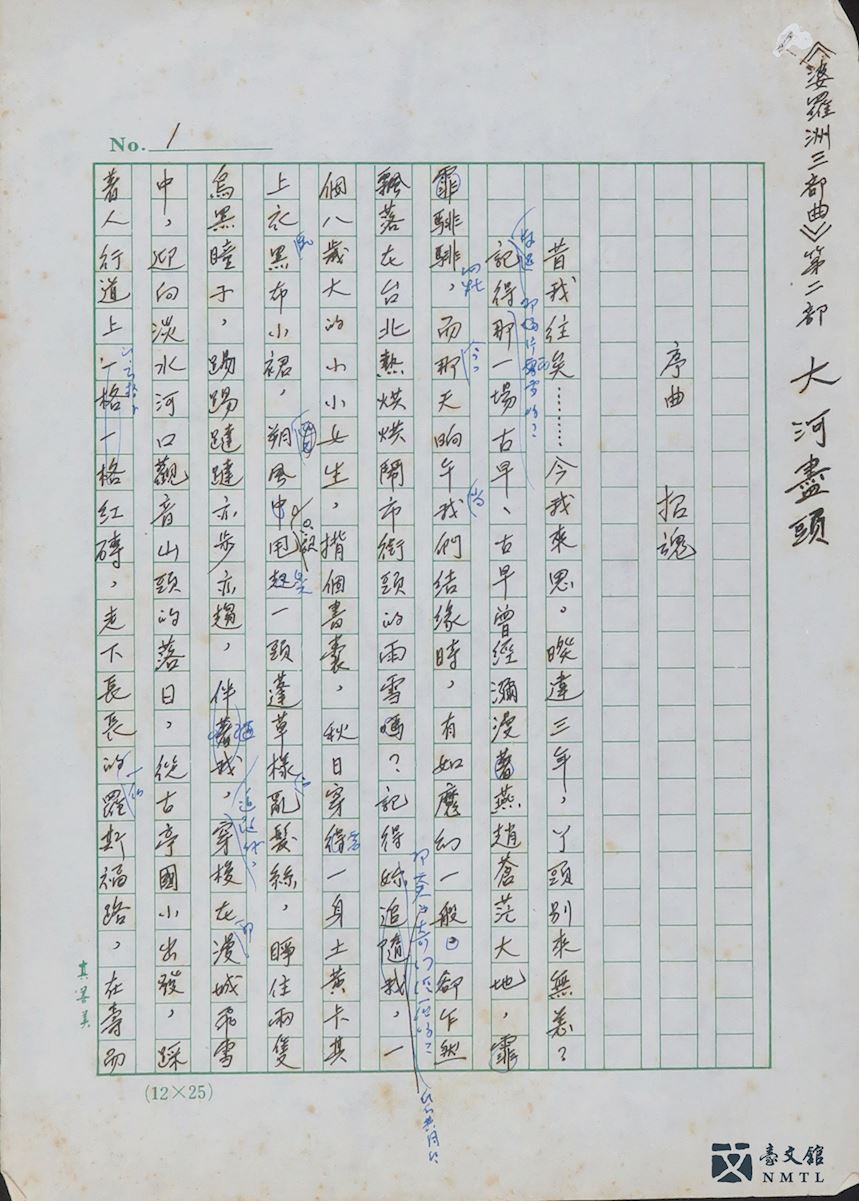
▸ Li Yong-ping, Manuscript of the Prelude to THE END OF THE GREAT RIVER|Manuscript of the prelude to the long novel The End of the Great River by Li Yong-ping (1947-2017). Li was born in Sarawak, Malaysia, and later moved to Taiwan. Li's works focus on the national and cultural identities of Borneo, China, and Taiwan. His works include Retribution, Gyrfalcon, Chu Ling in Wonderland, Chu Ling's Book.
NEXT: “Democratization”
